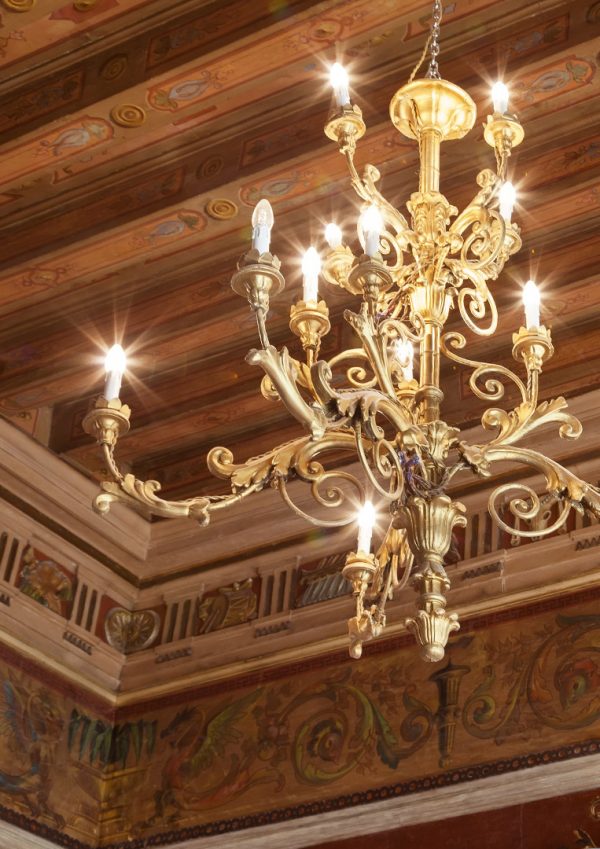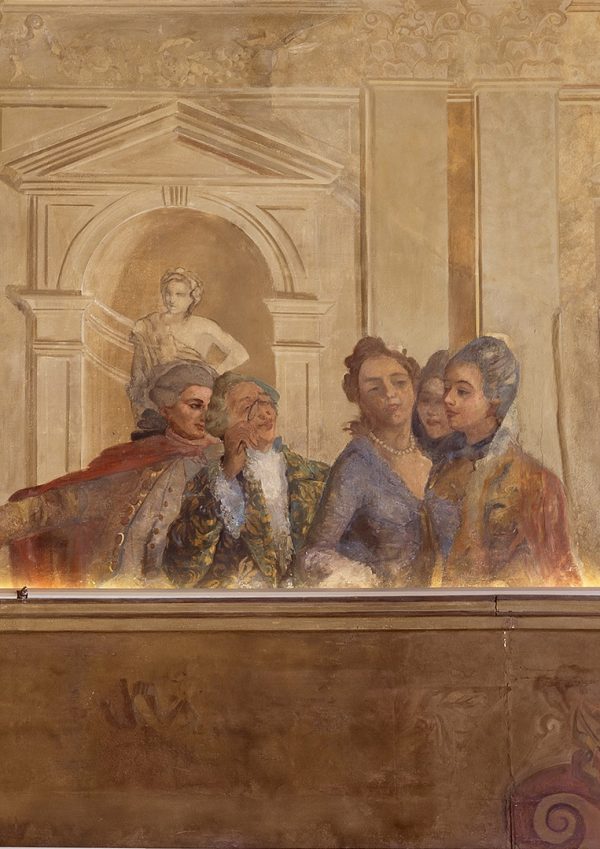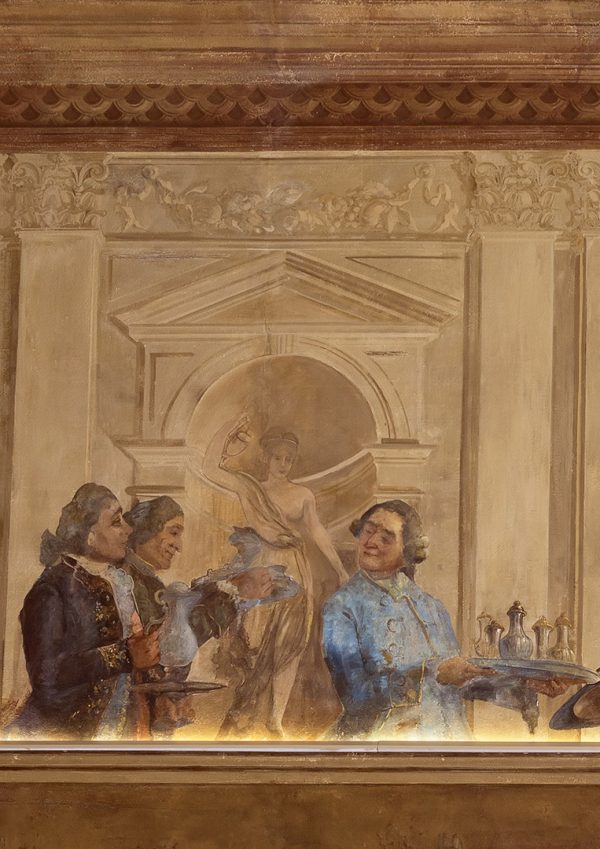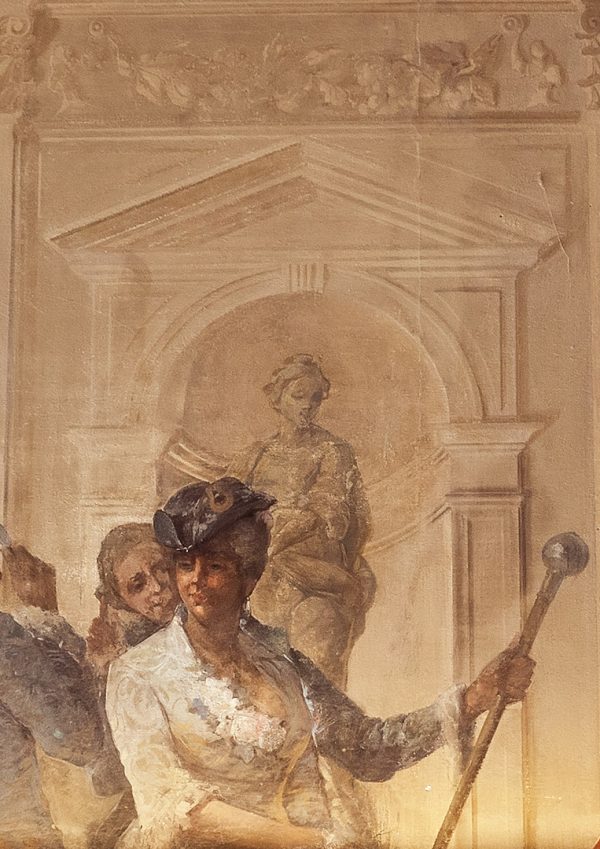
The history of
Palazzo Venart
Palazzo Bacchini delle Palme on the Grand Canal in Venice has regained its former splendour and timeless charm, after years of neglect and decay, thanks to a thorough restoration completed in 2016.
The palace, a tribute to the thousand-year history of Venice, has over time hosted some of the most illustrious personalities of the past and was the scene of the social and cultural life of the Venetian nobility.
In the fifteenth century, the building, formerly owned by the Lion family, then the Vernier family, was the home of the great mercenary captain Pandolfo Malatesta, lord of Rimini and patron of the arts, who took refuge here after being excommunicated and sentenced to be burnt at the stake for his excessive greed.
The palace in the past was also home to the luckless Francesco da Bussone, known as the Count of Carmagnola, accused of treason and executed between the two columns in St. Mark’s Square.
Originally, the front of the palace faced the Grand Canal, occupying the space that is now the garden. The structure of the palace was the typical Venetian tripartite architecture of the fifteenth century, with direct access from the canal and the white marble façade interspersed with arched windows, decorated with elegant balustrades in Istrian stone.
In the golden age of the eighteenth century, the salons on the piano nobile of the palace hosted the social and cultural life of the city’s aristocratic elite, who, to the notes of Vivaldi played by string quartets, gathered to dance, play cards and converse.
Throughout the centuries, the building has always been one of the most exclusive and spectacular in the city, so much so that in 1819 it even appeared in the tourist guidebook entitled ‘Forestiero Istruito nelle cose più pregevoli e curiose antiche e moderne della città di Venezia’ (translated, the title means ‘For foreigners that they may learn of the most splendid and curious ancient and modern things of the city of Venice’).
However, in a fire that broke out in in 1845, the façade of the palace facing the Grand Canal was destroyed, leaving space for the current ‘garden on the water’, while the salon and the portion of the building that housed the casinò were saved.


The reconstruction of the building took more than a decade: in the first phase, starting in 1851, the damaged and unsafe areas were secured and structural works were completed, while from 1864 the spaces were redefined and the decorative elements completed.
Further restoration work was carried out in 1880, during the period when the palace was owned by Amelia Richetti, who received it as an inheritance from her husband along with other historic Venetian buildings. These properties included a residence in San Stae and an estate in Altino, an ancient pre-Roman city that is now no more. Her daughter Adele married Lieutenant-Colonel Edmondo Bacchini delle Palme, to whom we owe the coat of arms in the salon – the symbols of which recall the close ties between the family and the Church of Rome – and the name of the palace as it has come down to us.
The tempera paintings adorning the walls and ceilings of the corridor, which we still admire today, date back to the time when the building was completely restored.
The frescoes recall the essence of the frescoes painted by Michelangelo Mortalier in Palazzo Grassi and show convivial scenes from Venetian society of the time, bearing witness to the fervour of palace life.
The scenes, painted to be admired from below and from a distance, are thought to have been created after the steps that connected the two wings of the mezzanine above the marble staircase were removed. Analysis of the surveys conducted during the restoration revealed that many of the pigments used in the paintings, such as zinc white, artificial ultramarine blue and chrome yellow, as well as inorganic binders made from a combination of carbonated lime and plaster, were not used at the time and instead date back to the second half of the nineteenth century.
The imposing and meticulous renovation of the ancient palace completed in 2016, aimed at preserving every indelible trace of the transformations it has undergone over the centuries, has restored to their former glory the ceiling and wall decorations in the corridor, the wooden beams painted with gold leaf, the Renaissance frescoes, and the stone architectural elements, such as the precious marble staircase leading to the mezzanine floor and the Istrian stone portal on the main floor.
Instead, the restoration of the area destroyed by fire in front of the Grand Canal – where the original Palazzo Vitturi Giustinian-Contarini stood – dates back to the twentieth century and was later replaced by an enchanting and intimate garden, embellished with statues and works of art, partly kept in the demolished building and partly coming from the Roman archaeological site of Altino.
In the following years, Bacchini delle Palme donated part of the collection to the Museum of Altino, where some works are still preserved, while others were left to decorate the garden, giving it the typical charm of a place rich in history.
In August 2016, the Taiwanese hotel group LDC Hotels Italy completed the restoration work and the palazzo was renamed Palazzo Venart – Luxury Hotel, now an elegant and exclusive five-star hotel, one of the most sought-after in Venice.
